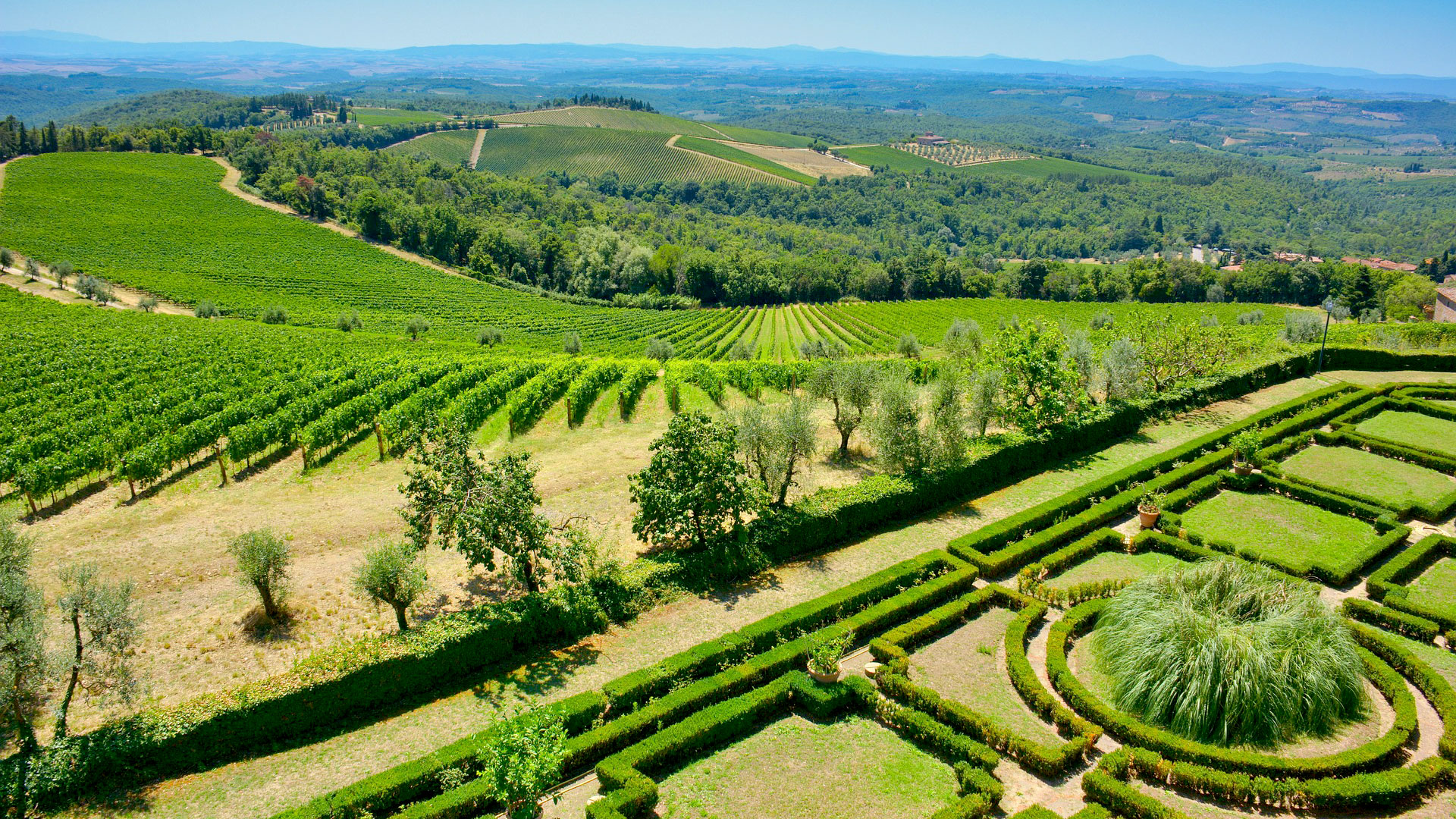History and tradition
Tuscany is one of the most important regions in Italy, both historically and culturally. No other region has contributed so much to Italian culture, be it in art, trade or history. The vine appeared in Tuscan soil at the time of the Etruscans. It was both the Greeks and the Romans who contributed significantly to the development of viticulture in the region. In earlier times, olive trees, vines and wheat were often planted together before these crops began to be separated.
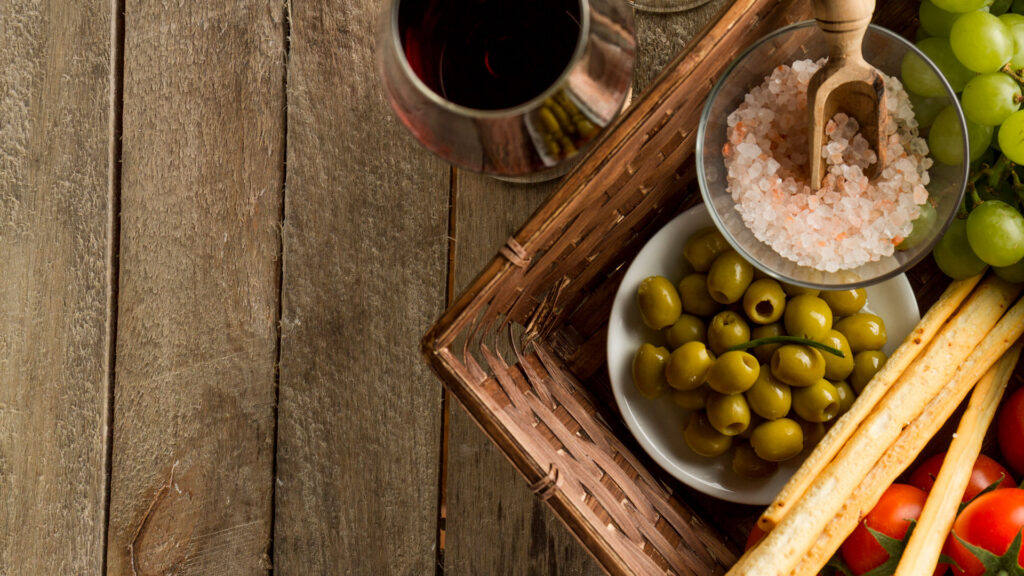
Even the ancient Romans appreciated Tuscany for its picturesque hills, golden sunsets and warm climate. The terroirs of this famous wine region stretch from the Mediterranean coast to the hilly interior, producing some of the world’s most sought-after wines with Mediterranean charm. Tuscan wine is considered the epitome of strength and elegance, produced in privileged terroirs. The favorable climatic conditions in Tuscany are particularly ideal for the production of high-quality red wines such as Bolgheri, Brunello di Montalcino and Chianti Classico.
Tuscany’s worldwide fame as a wine region began in 1968 when Mario della Rocchetta launched Sassicaia, followed by Antinori with Tignanello in 1971. This inspired other wineries to cultivate Bordeaux grape varieties such as Cabernet Sauvignon and Cabernet Franc and combine them with Sangiovese. Partially matured in barriques, the wines from Tuscany subsequently achieved international fame.
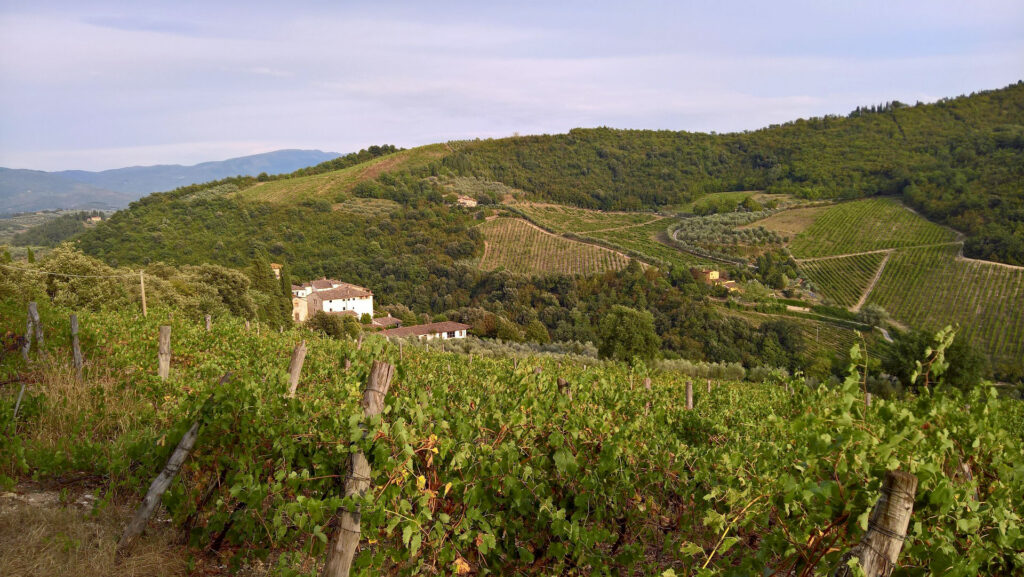
Importance of viticulture
Tuscany covers around 63,633 hectares of vineyards and, like Bordeaux and Burgundy in France, is one of the most renowned wine-growing regions in Italy – alongside Piedmont. The most important grape variety in Tuscany is Sangiovese, which makes up at least 75% of the wine in the famous Chianti. The exclusive Brunello di Montalcino and its often referred to little brother, Rosso di Montalcino, are made from a special variety of Sangiovese, the Brunello grape or Sangiovese Grosso, which makes up 100% of the wine.
On the Mediterranean coast, wineries, including the famous Tenuta San Guido, began cultivating Cabernet varieties such as Cabernet Sauvignon and Cabernet Franc in the late 1960s and early 1970s. What originally began as an experiment led to the creation of the so-called Super Tuscans. These wines, such as Sassicaia, achieved international fame, although for a long time they did not have DOC status and were therefore traded as expensive table wines. Sassicaia has since been awarded DOC status as Bolgheri, Sassicaia subzone, while other wines such as Antinori’s Tignanello, Ornellaia, Masseto and Monteverro have still not been awarded DOC status. The high quality and unique character of these wines make them particularly sought-after, which is why many wine lovers want to buy Tuscan wines.
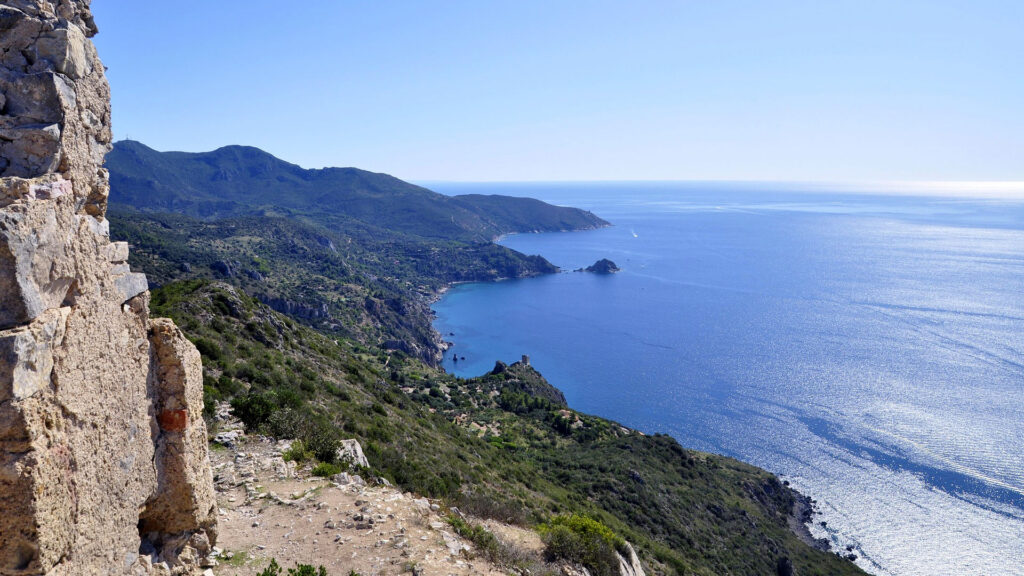
In addition to these outstanding red wines, Tuscany is also known for its Vin Santo, an oxidative dessert wine. This is usually offered in the sweet (dolce) version, but there are also semi-sweet (amabile) and dry (secco) versions with different alcohol and residual sugar levels. Vin Santo is traditionally served with cantuccini, a classic almond cookie, which is one of the typical Tuscan delights.
Climate and geology
The climate in Tuscany is characterized by a clear dichotomy: While a mild, humid Mediterranean climate prevails on the coast, a continental climate with cold winters and hot, dry summers dominates inland. These different climatic conditions create optimal conditions for viticulture in this wine-growing region. The gentle hills and the Mediterranean climate on the coast offer ideal conditions for the production of quality wines, while the continental climate inland is particularly favorable for late-ripening Sangiovese.
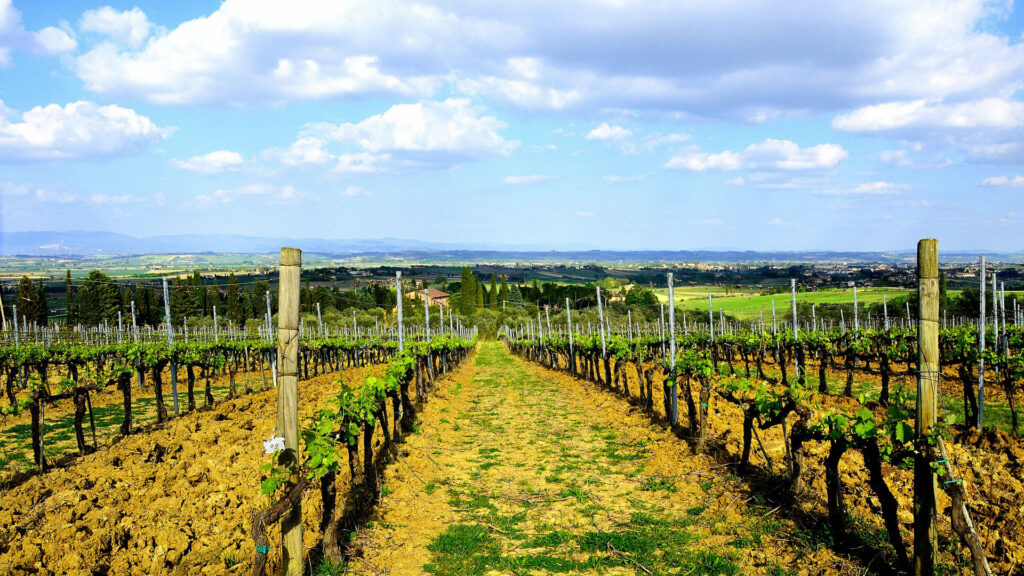
Popular grape varieties in Tuscany
Sangiovese grape: the main grape variety in Tuscany
The Sangiovese grape, often referred to as the queen of Italian grape varieties, offers an impressive variety of uses. It ranges from simple table wines to highly regarded top wines with an international reputation. In our blog post “Sangiovese: Foundation of Tuscan cult wines”, you can find out everything you need to know about this important red grape.
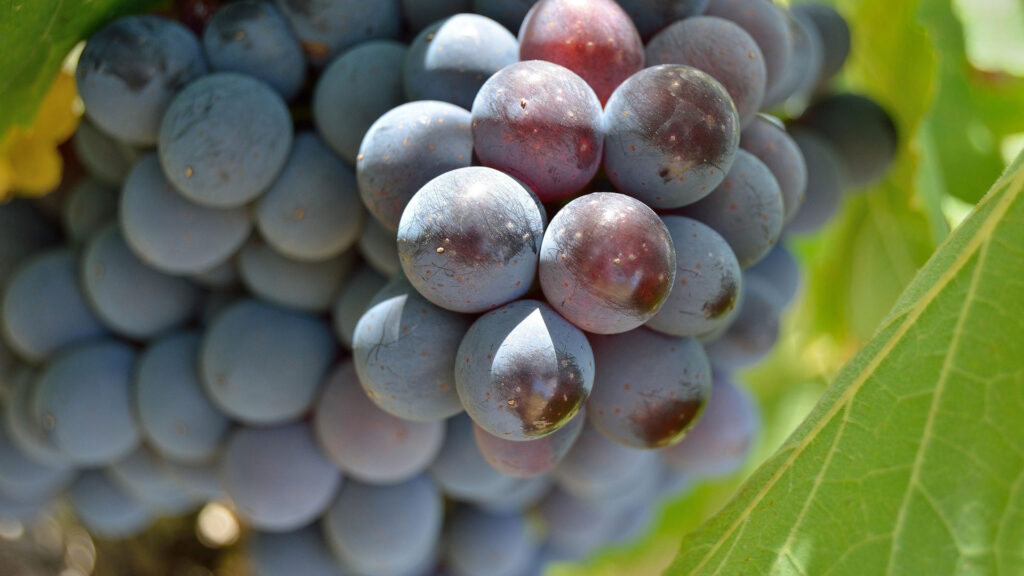
As Tuscany’s leading grape variety, Sangiovese is the basis for iconic wines such as Chianti and Brunello di Montalcino. Although Sangiovese, also known as Nielluccio, is undisputedly the region’s main grape variety, winemakers are also successfully experimenting with international grape varieties. Regional variants of the Sangiovese grape play a central role in many famous wines, including:
- Brunello, also known as Sangiovese Grosso or Sangioveto, is the only authorized grape variety for Brunello di Montalcino DOCG and Rosso di Montalcino DOC.
- Prugnolo Gentile, used in the Vino Nobile di Montepulciano DOCG.
- Morellino, the basis for Morellino di Scansano DOCG.
Sangiovese wines are characterized by their good structure, pronounced acidity and distinctive tannins, often with a light red color. In Tuscany, Sangiovese is traditionally blended with indigenous grape varieties such as Canaiolo Nero, Ciliegiolo or Colorino. Nine of the eleven Tuscan DOCGs stipulate a Sangiovese content of up to 95%, which underlines the central role of this grape variety in Tuscan wine production.
Chianti, Montalcino & Montepulciano – three famous ambassadors of Tuscany
The DOCG Chianti covers a large area in the foothills of the Apennines and produces wines that vary greatly in quality. Many wines labeled as DOCG Chianti are rather simple, inexpensive and not intended for long storage.
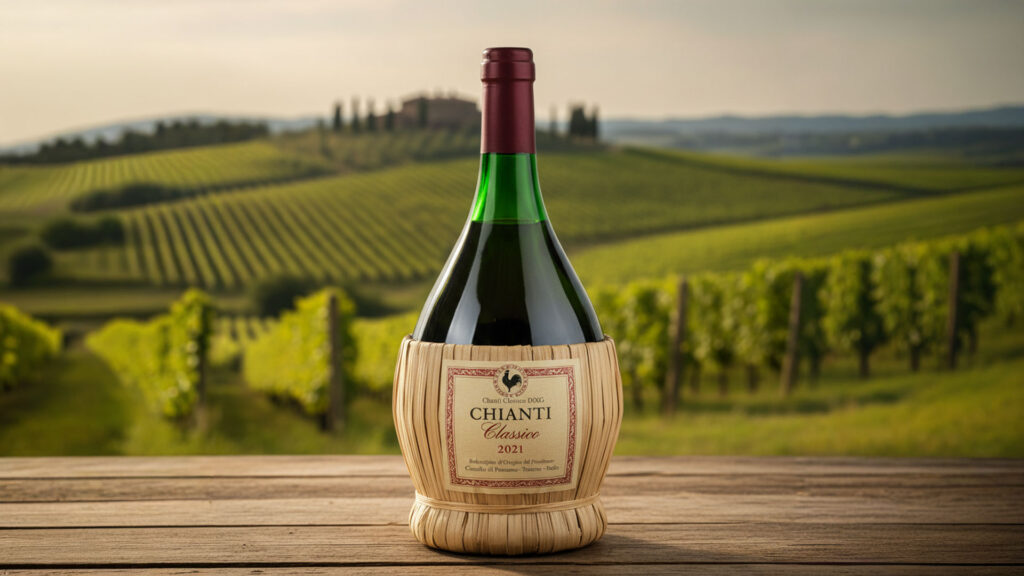
In comparison, the DOCG Chianti Classico is higher and offers the Sangiovese grapes a longer ripening period. A typical Chianti Classico DOCG is characterized by a medium body, pronounced aromas of red fruits and notes of dried herbs. It is often matured in oak barrels to soften the tannins and develop more complex aromas. The best wines in this category can continue to mature in the bottle and develop aromas of meat and leather. Chianti Classico Riserva is subject to stricter ageing regulations and may already have tertiary flavors when it is released.
The DOCG Brunello di Montalcino is a powerful, full-bodied wine from the warm, sunny town of Montalcino in southern Tuscany. With a high tannin and acidity content, this wine needs to mature for a long time in oak barrels before release, which gives it excellent ageing potential. Brunello is the local name for Sangiovese in this region.
Montepulciano, a grape from Abruzzo in central Italy, produces dark wines with medium acidity, high tannin content and aromas of black fruits such as plums and cherries. The wines of the DOC Montepulciano d’Abruzzo are particularly well known. Large quantities of inexpensive Montepulciano wines are produced in the Abruzzo region, which are generally simple and fruity and intended for immediate consumption. However, more concentrated wines from this region can also be aged briefly in oak barrels.
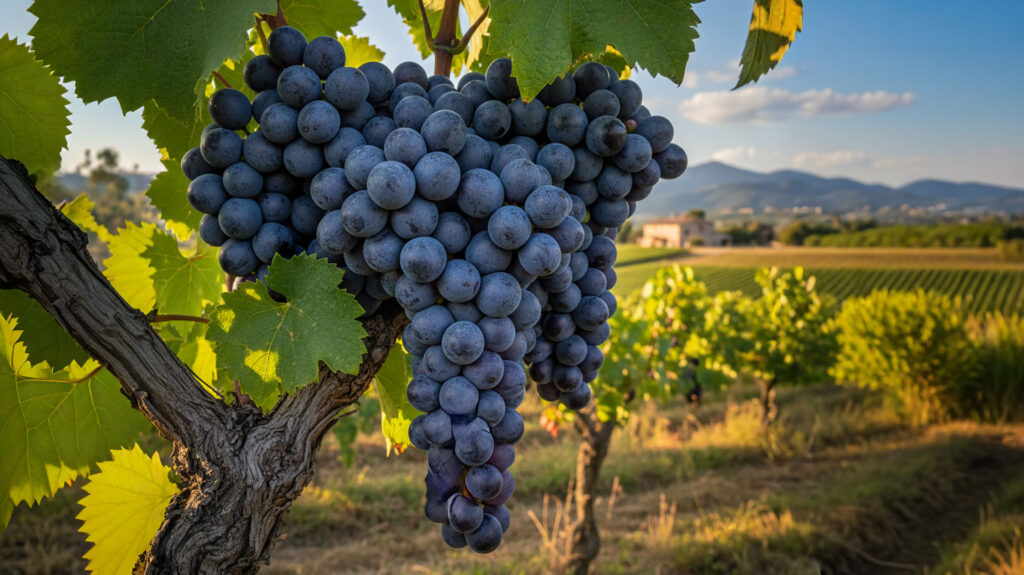
Cabernet Sauvignon: Bordeaux grape variety in the heart of Tuscany
After the Super Tuscan revolution in the 1970s, Italian winegrowers began to cultivate classic Bordeaux grape varieties alongside the native Sangiovese. Cabernet Sauvignon, Cabernet Franc, Syrah and Merlot thrive particularly well in the southern Maremma. The impressive Cabernet Sauvignon wines, above all the legendary Sassicaia, are proof of the ability of Tuscan winegrowers to produce international quality wines at the highest level.
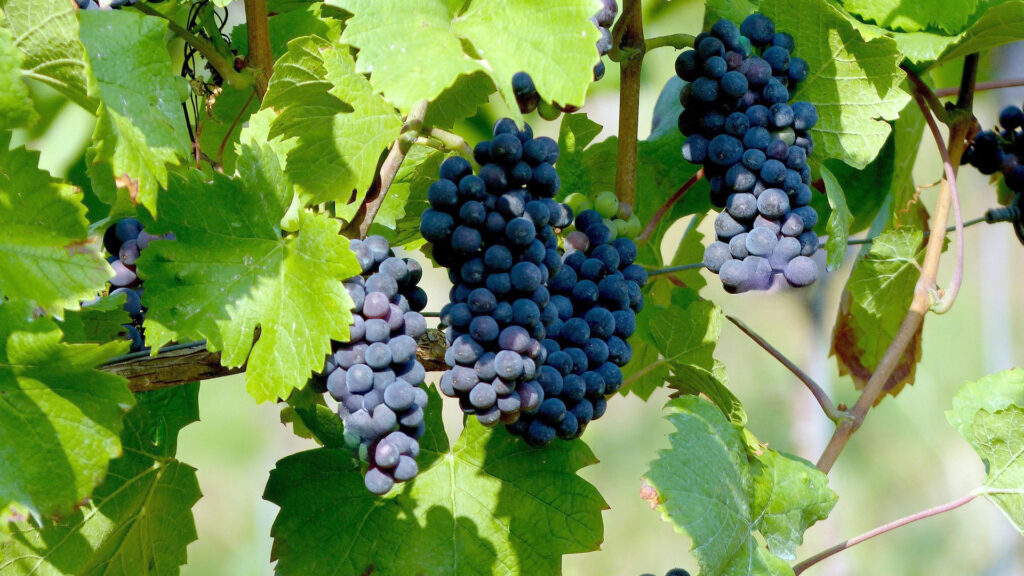
Grape varieties for Tuscany white wine
In Tuscany, a number of white grape varieties have made a name for themselves, including Malvasia del Chianti, Moscato Bianco, Vernaccia, Vermentino, Ansonica and Trebbiano Toscano. International varieties such as Sauvignon Blanc and Chardonnay have also established themselves in the region, while Riesling Italico and Pinot Bianco are represented in smaller growing areas.
However, the most important white grape variety in Tuscany is Vernaccia di San Gimignano, which is cultivated northwest of Siena around the medieval “city of towers” of San Gimignano.
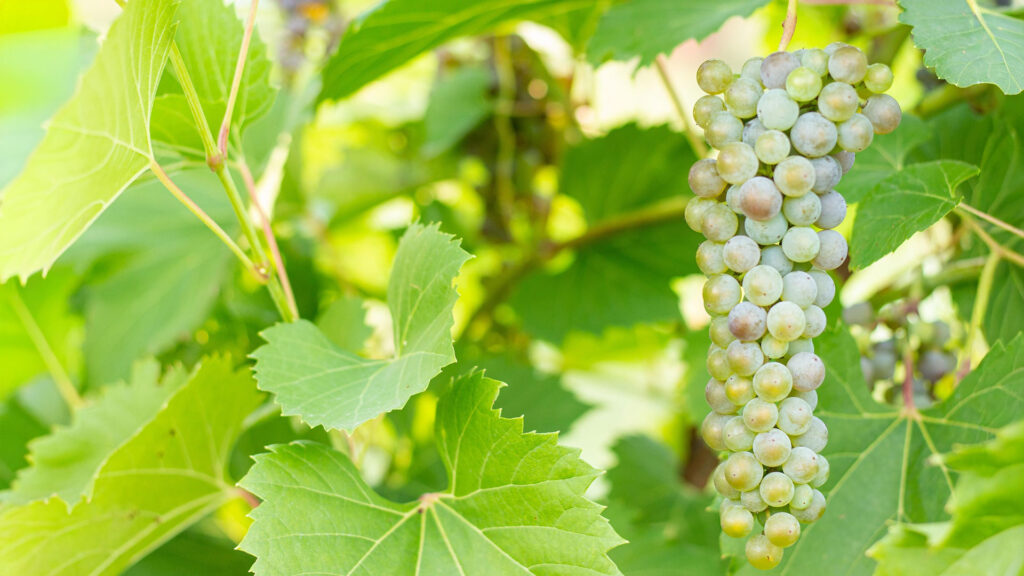
Other indigenous varieties also play an important role in Tuscan wine production:
- Trebbiano Toscano, the main ingredient of wines such as Galestro and Vin Santo del Chianti as well as del Chianti Classico.
- Malvasia Bianca Lunga, a key grape variety for the production of Vin Santo.
- Moscato Bianco, known for the sweet Moscadello di Montalcino.
The wine regions and their appellations
Tuscany is home to eleven renowned DOCG wines that are known for their exceptional quality and variety. Among the most famous are Brunello di Montalcino, Chianti and Chianti Classico, both of which are prized worldwide. Also worth mentioning are the Vino Nobile di Montepulciano and the Morellino di Scansano, which are also Sangiovese-based. Vernaccia di San Gimignano is the region’s most important white DOCG, while wines such as Carmignano, Montecucco Sangiovese, Suvereto, Val di Cornia Rosso and Elba Aleatico Passito round off the diverse range of top Tuscan wines.
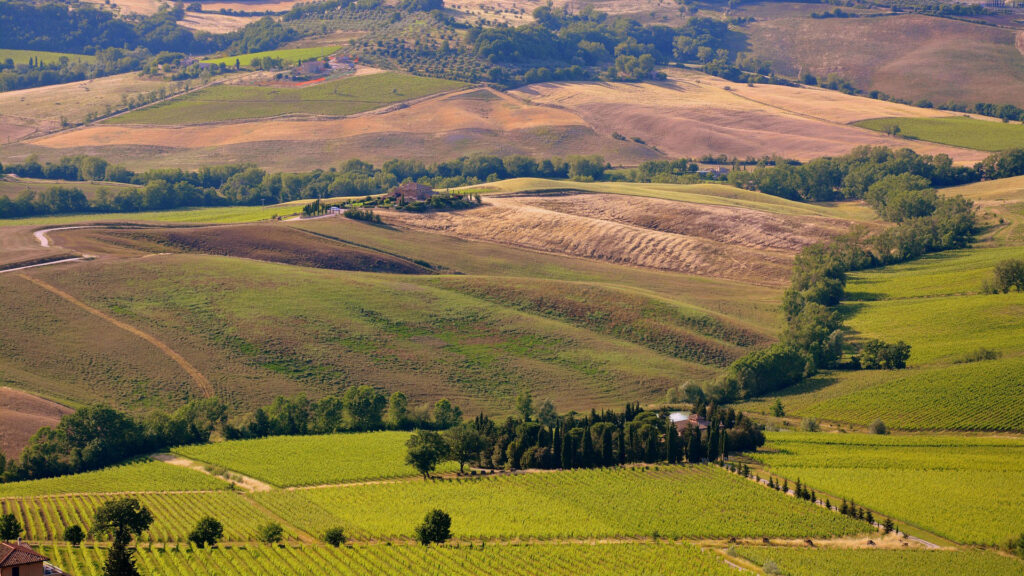
Tuscany offers an impressive variety of wines from 41 different DOC areas. These include well-known names such as Bolgheri, Bolgheri Sassicaia and Rosso di Montalcino, as well as historic growing areas such as San Gimignano and Carmignano. Also worth mentioning are the white wines from Ansonica Costa dell’Argentario, Bianco di Pitigliano and Vernaccia di San Gimignano.
Other important DOC areas are Montecucco, Maremma Toscana and Val di Cornia, which underline the broad spectrum of Tuscan wine culture. This diversity is perfectly complemented by the traditional Vin Santo wines produced in several DOC areas such as Chianti, Chianti Classico and Montepulciano.
The six IGT wines from Tuscany come from Alta Valle della Greve, Colli della Toscana centrale, Costa Toscana, Montecastelli, Toscano or Toscana and Val di Magra.
The IGT designation, which was introduced in 1995, offers winegrowers in Tuscany and other regions of Italy greater flexibility in wine production compared to the stricter DOC and DOCG regulations. IGT wines are intended to reflect the characteristic geographical and qualitative features of their region of origin, but are not subject to the strict cultivation and production rules that apply to DOC/DOCG wines.
These wines are often made from grape varieties that are not traditionally grown in the region, or are the result of innovative blends that fall outside the classic norms. The IGT category has allowed winemakers to experiment with new grape varieties and techniques, producing a wide range of high-quality and creative wines.
The Super Tuscans from Sangiovese and Cabernet Sauvignon
From revolution to icon: In 1971, Marchese Piero Antinori, an experienced 26th generation winemaker, took a bold step together with the famous oenologist Giacomo Tachis and created Tignanello.
This exceptional cuvée, consisting of local Sangiovese and French Cabernet Sauvignon, both matured separately in barriques using the Bordeaux method, posed a double challenge to traditional Italian winegrowing regulations. Despite its immediate international success, Tignanello was initially only allowed to be sold as Vino da Tavola, as it violated existing rules.
In the years that followed, the Maremma produced other renowned Super Tuscans, such as Ornellaia, Masseto, Monteverro and Sassicaia, the latter being the only one to receive DOC recognition (Bolgheri, Sassicaia subzone). For those who want to experience a true Tuscan cult wine, the Tignanello Toscana IGT from Tenuta Tignanello (Antinori) is an outstanding choice.
Tuscany is known worldwide for its red wines, which combine a rich tradition and diverse flavors. The region, which offers picturesque landscapes, cultural heritage and a rich culinary tradition, is home to some of Italy’s most famous wines. These wines are characterized by their elegance, complexity and ability to harmonize beautifully with a variety of foods.
Perfect pairings: Tuscan wines and their ideal companions
Chianti Classico and Bistecca alla Fiorentina
Chianti Classico is one of Tuscany’s best-known red wines. With its medium body, red fruit aromas and pleasant acidity, this wine is a perfect match for Bistecca alla Fiorentina, a thick, grilled steak made from Chianina beef. The structure and tannins of the Chianti Classico complement the strong flavors of the meat and create a harmonious pairing.
Brunello di Montalcino and wild boar stew (Cinghiale in Umido)
Brunello di Montalcino is a powerful, full-bodied wine made from the Sangiovese Grosso grape. Known for its complexity and ageing potential, this wine is an excellent accompaniment to wild boar stew, a classic Tuscan dish. The intense aromas of Brunello, including notes of cherry, leather and spices, harmonize perfectly with the rich, spicy taste of the ragout.
Morellino di Scansano and Pappardelle al Cinghiale
Morellino di Scansano, another Sangiovese-based wine, is known for its fruitiness and soft tannins. This wine is an ideal accompaniment to Pappardelle al Cinghiale, a Tuscan specialty made from wide pasta and wild boar meat. The juicy, fruity notes of Morellino complement the spicy aromas of the wild boar and the tomato sauce that is often used for this dish.
Vino Nobile di Montepulciano and Pecorino Toscano
The Vino Nobile di Montepulciano is an elegant wine with aromas of plum, cherry and a hint of spice. This wine goes perfectly with Pecorino Toscano, a matured sheep’s milk cheese from the region. The light spiciness and nutty notes of the pecorino are wonderfully complemented by the fruity and slightly earthy aromas of the Vino Nobile.
Rosso di Montalcino and Ribollita
Rosso di Montalcino, often referred to as the “little brother” of Brunello, is a fresh and accessible Sangiovese wine. It is an excellent accompaniment to ribollita, a traditional Tuscan stew made from bread, beans and vegetables. The lively acidity and fruity aromas of Rosso di Montalcino harmonize well with the hearty, earthy flavours of Ribollita.
Buy wine from Tuscany
You can buy the best red wines from Tuscany from renowned winemakers such as Frescobaldi and Allegrini in our online store. If you would like to buy Tuscan wines, we offer a selection of white wines and red wines from Tuscany produced by various winegrowers.
Frequently asked questions and their answers about wine from Tuscany
What wines are there in Tuscany?
To summarize, red wines clearly dominate in the Tuscan wine region. In addition to the Sangiovese-based wines, Canaiolo and Merlot are also widespread in this Mediterranean region. Since the rise of the Super Tuscans, Cabernet Sauvignon and Cabernet Franc have also taken on a significant role in Tuscany’s wine production.
What do you drink in Tuscany?
Sangiovese, Tuscany’s outstanding red wine variety, has the ability to produce both excellent everyday wines and first-class prestige wines. The region’s best-known wines include Chianti, Brunello di Montalcino, Morellino di Scansano and Vino Nobile di Montepulciano.
What is the most famous Italian wine?
The most important Italian wines include Barolo, Amarone, Lambrusco, Prosecco, Chianti and Brunello di Montalcino. Important wine regions in the country are South Tyrol, Piedmont, Lombardy, Friuli-Venezia Giulia, Tuscany and southern Italy.
What is Tuscany known for?
Tuscany is famous for its picturesque hilly landscape, which is characterized by pine trees, cypresses, olive trees and vines. The highest mountain in the region is Monte Prado at 2054 meters. Tuscany also has extensive woodlands covering an area of 10,000 km².

